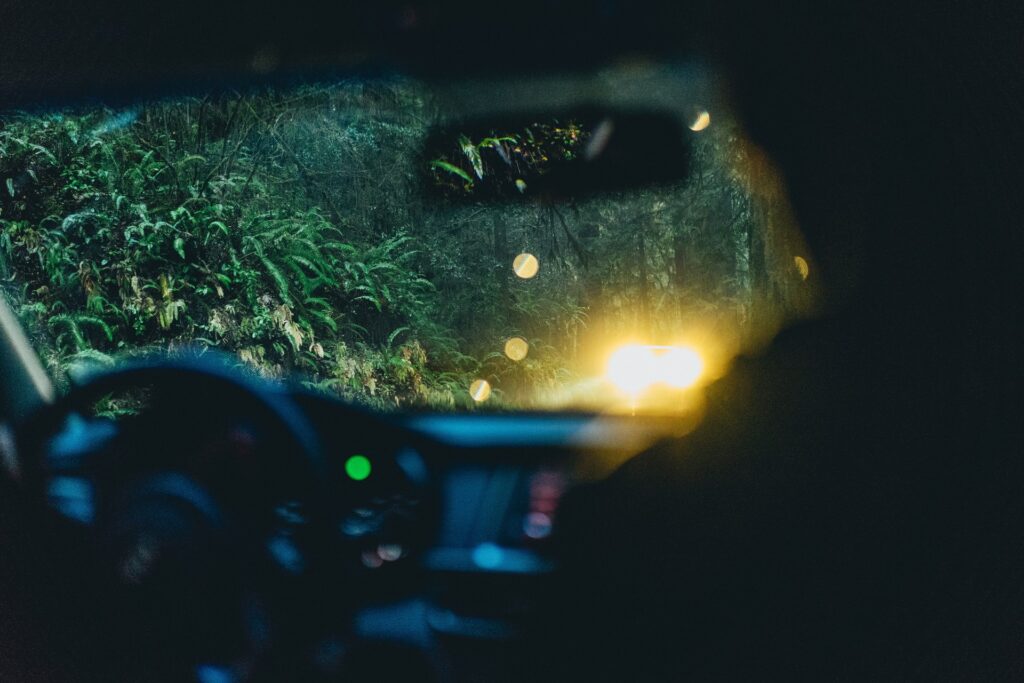Driving at Night: How to Remain Safe (2024 Update)
Jan 02, 2024

As an Amazon Associate, Modded gets commissions for purchases made through links in this post.
Driving at night can be lots of fun, but it can also be a stressful experience. Your vision is limited, you might be exhausted after a long day, and you never know when an animal or pedestrian could be roaming next to the roads.
If you’re struggling to see while driving at night or simply dislike night driving in general, this guide is for you. Here are a few basic tips to keep yourself and others safe when driving at night.
Take Care of Your Headlights
Your headlights are your first defense against the darkness. Without them, you would surely run headlong into countless people, animals and objects while driving. If you’re struggling to see while driving at night, it might not be your eyesight — it could be something wrong with your headlights.
You must keep your headlights in the best condition possible. For starters, you need to prevent them from fogging up so they work to full capacity and give you maximum visibility. Your low beams should illuminate at least 200 feet of the road in front of your car, while high beams light up 350 to 500 feet.

The reason why 200 feet is the bare minimum is because it takes most vehicles about 200 feet to come to a complete stop while traveling 60 mph. If you see something in the distance and are driving the speed limit, you should have enough time to slow down and avoid an accident.
Surprisingly, many headlights, even in new cars, are pointed lower than necessary. Others are unevenly pointed, and both of these miscues can severely impair your field of vision at night. Take the time to aim your headlights directly forward as high as you feel is necessary. Doing so will improve and extend your field of vision on the road.
Take Care of Your Eyes
It seems obvious to say that the nighttime has an effect on your eyes, but it’s especially true in the context of driving at night. The darkness drastically affects your eyesight. Your pupils dilate, which causes your eyes to detect movements and lights instead of sharp details and vivid colors you normally pick out during the day.
Your depth perception is also dulled at night, which makes your eyes more disposed to feeling tired and dry. These factors make it more difficult to identify obstacles when driving at night. If you’re struggling to see while night driving despite having good headlights and getting assistance from street lights, you might want to get your vision checked.
Eye doctors recommend keeping your eyes moving and scanning the road while driving at night, rather than focusing all your vision on just one area. Scanning will help you detect movements and lights, and improve your reaction time. The American Optometric Association also suggests adults get a yearly eye exam to monitor a potential decline in vision.
Stay Focused and Alert
This rule applies to driving in general, but especially to driving at night. It’s very easy to let drowsiness take over while you’re behind the wheel, so staying sharp is of utmost importance. People have a lapse in concentration and space out while driving all the time, but it happens more often at night because there are fewer things for your eyes to focus on.
You also need to worry about another nighttime hazard — drunk drivers. Drunk driving is much more common at night for obvious reasons. People get out of work, have a few drinks and try to drive home in the darkness. If you encounter a reckless driver, the person might be intoxicated. Keep your distance from them and call the police if you think it’s necessary.

If you’re having trouble staying focused while night driving, you should consider doing a few things. Start by putting your phone away and keeping both hands on the wheel. Hide it in the glove compartment or throw it in the backseat — it’s not doing you any favors. You could also try turning off the radio and driving in silence for a while.
Even at night, there can be plenty of distractions on or next to the road, so don’t let your eyes wander and become fixated on something in the distance. Always stay on the lookout for oncoming traffic and try to anticipate the actions of the vehicles around you. To avoid the glare from other vehicle’s headlights, focus your eyes on the right side of the road until it passes.
Keep Your Distance
You should never tailgate other drivers under any circumstances, but avoiding this habit during night driving is especially important. Remember — visibility is low and your reaction time isn’t as fast. If the car in front of you slams on the brakes, you must give yourself enough space to slow down. Keep your distance from other vehicles at all times.
Another reason not to tailgate at night is because you might make other drivers nervous. Everyone is a little more on defense while driving at night, not just you. Being aggressive will make others uneasy, potentially causing them to make a mistake. Why risk an accident? Stay back from the vehicle in front of you and keep your driving under control.
Drive the Speed Limit
Speaking of keeping yourself under control, you need to drive the speed limit. You might get away with zooming down the highway during the day, but it’s much riskier at night. Many crashes occur on narrow two-lane roads and highways.
Driving the speed limit will give you more time to react to oncoming obstacles, including stopped vehicles, pedestrians and animals. It’s the simplest thing you can do while driving at night and yet it’s the one thing most people overlook.
Get Enough Rest
Being tired behind the wheel is normal, but you can’t ignore eye fatigue if it affects your driving performance. When your eyes start feeling heavy, just pull over and take a quick nap rather than staying on the road and endangering yourself. Truckers and other long-distance drivers know from experience that fatigued driving is a recipe for disaster.
You need to get enough rest if you drive at night daily. Get at least seven hours of sleep every night and take naps during the day if necessary. You also have an extremely helpful resource at your disposal — caffeine. Bring some coffee or an energy drink with you if you need an energy boost before a long nighttime drive.
Avoid Certain Roads
According to the National Highway Traffic Safety Administration, the most dangerous roads while driving at night are two-lane highways and other long flat roads. On these types of roads, the glare from oncoming vehicles can be extremely bright because other drivers must face them head-on.

Roads with no street lights are also dangerous for an obvious reason — lower visibility increases the risk of a crash. Side streets with lots of hills and curves have a similar problem, presenting many opportunities for collisions. If you’re not 100% comfortable driving on these roads at night, avoid them and find another route.
Now You Know How to Drive at Night
Knowing how to drive at night is an important skill to have. If you want complete freedom behind the wheel, you must overcome your fears about driving at night and keep practicing. Even if you’re still not fully comfortable, these tips will at least make your nighttime driving more safe.
Original publish date 10/4/2016 — Updated 1/2/2024





